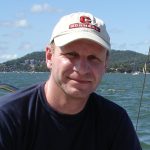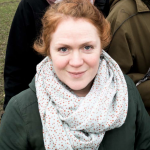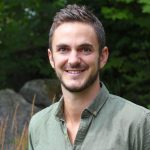Next edition: Wageningen Soil Conference Aug 28 – Sept 1, 2023.
 We hope many of you still remember the fantastic conference we had in Wageningen in August 2019. Since the Wageningen Soil Conference is typically organized every two years, perhaps you were looking forward to join the next conference scheduled in 2021.
We hope many of you still remember the fantastic conference we had in Wageningen in August 2019. Since the Wageningen Soil Conference is typically organized every two years, perhaps you were looking forward to join the next conference scheduled in 2021.
Unfortunately, we would like to inform you that the next Wageningen Soil Conference will be postponed to 2023. The reasons for this are:
- Many conferences planned in 2020 have been postponed to 2021 because of the COVID-19 pandemic, filling rapidly the conference agenda for 2021.
- At this point in time it is still uncertain whether on-site conferences in 2021 will take place.
- The format of the Wageningen Soil Conference (with master classes and many side events) is not very suitable to organise on-line.
- Postponing to 2022 would interfere with other major conferences held that year, such as the World Congress of Soil Science in Glasgow.
We hope you will understand our decision and that you will join the Wageningen Soil Conference in 2023. We aim to have the same successful set-up as last time, with keynote presentations and parallel sessions in the mornings, masterclasses in the afternoons, a fishbowl, rising-soil-stars and meet-the-experts events, a bicycle ride to the conference dinner, and much more.
We will keep you updated in due time on the website. We look forward to welcoming you in 2023 to Wageningen for an interactive and inspiring soil conference!
Wageningen Soil Conference 2019
Understanding soil functions
August 27 – 30, 2019
Wageningen, the Netherlands
Wageningen University & Research, ISRIC and IBED were delighted to invite you to join us at the fourth edition of the Wageningen Soil Conference. As in previous editions, the aim was to discuss the importance of soils. In the 2019 edition, the focus was on “Understanding soil functions: from ped to planet”. To do this we adopted a new style of conference, with traditional conference talks in the mornings, followed by a range of scientific and interactive topic masterclasses in the afternoons.
Special Issue “Understanding soil functions: from ped to planet.”
![]()
We are pleased to announce a special issue in the European Journal of Soil Science. In this special issue we will invite papers presented at the Wageningen Soil Conference (2019) and public submission to address the issue of measuring, mapping and evaluating soil functions from ped to planet, with an additional section addressing the synergies and trade-offs which occur between soil functions. More details on paper submission dates here.
Keynote Speakers

Tuesday August 27
Professor Johannes Lehmann, Cornell University
Soil Organic Matter: From changing form to changing function
The science and policy of soil organic matter have undergone large shifts over the last decade, changing the way we have to manage soils and catapulting soil health and carbon sequestration onto the world stage. The demands on soil for securing food production, water quality and mitigating climate change are daunting in the face of concurrent changes in fundamental understanding of the forms and cycles of organic matter in soil. The notion takes hold that rather than the formation of recalcitrant molecules, life traits of soil biota and interactions with the mineral matrix determine the forms and amounts of soil organic matter. This puts biological controls on soil organic matter under scrutiny with a delicate balance of input and mineralization, recognizing that soil is a flow-through reactor of plant carbon rather than a store where carbon can be biologically sequestered for the long term. Indeed, most soil organic matter is of microbial origin and of large molecular diversity in complex spatial arrangement. Recent modelling efforts were able to describe long-term and large-scale soil carbon dynamics using ecological equilibrium theory and without invoking pools with long residence times. The focus on soil biota as agents of both mineralization as well as stabilization of soil carbon appears as a contradiction and emphasizes the concept of ecosystem control rather than stabilization and sequestration for the long term, even though large portions of soil carbon have old radiocarbon ages. This focus also reflects the growing interest in soil health that puts a spotlight on biological functions rather than only on provisioning and storing nutrients. With these described shifts in understanding of form and function of soil organic matter comes the realization that soil ecosystem services require constant care rather than one-time fixes. Soil management is then a continuing commitment requiring policy, regulatory and market mechanisms that finance soil health practices in the framework of climate-smart solutions.
Watch the keynote video here.

Wednesday August 28
Dr Edith Hammer, Lund University
Build your own soil: Micro-structured Soil Chips allow to investigate soil functions at microbial scale
Soils form the foundation of life on earth and are likely the most species dense habitats on our planet. But despite their fundamental importance, soils and their complex microbial communities have historically been one of the most challenging habitats to study because of their blend of diverse materials and organisms in a complex spatial arrangement, and their opacity. We recently developed microfluidic and micro-engineered model systems that simulate the spatial microstructure of soil microbial habitats in a transparent material, which we call Soil Chips. They allow us to study soil functions at relevant micro-scales: Microbial behaviour and interactions in response to a spatially refined habitat with heterogeneous nutrient distribution, and soil functions such as e.g. physical soil carbon stabilization in the labyrinth of the soil pore space. We can colonize our chips with fluorescent microbial strains and fluorescent substrates to e.g. study foraging strategies and organic matter cycling, or with a whole natural soil including the complex microbial community and soil mineral particles. The chips act like a window into the soil, through which we can eaves-drop on a world that otherwise is largely hidden to us: Jostling protists, tsunami-like drying-rewetting events, and fungi with character. Beyond the scientific potential, the chips can also bring soils closer to people and hopefully increase engagement in soil health conservation.
Watch the keynote video here.

Thursday August 29
Dr Thomas Crowther, ETH Zurich
Mapping microorganisms to understand the feedbacks between warming and soil carbon loss at a global scale
By driving the fixation, stabilization and mineralization of soil organic matter, soil organisms regulate the exchanges of carbon and nutrients between the biosphere and atmosphere. Predicting how soil organisms regulate these organic matter pools is central to our understanding of soil fertility, atmospheric composition and climate.
Despite the hyper-diverse nature of soil communities, the exploration of global ecological trends across regions in the last decade is beginning to provide a unified perspective. The immense global communities are generally dominated by a relatively small number of cosmopolitan species that show consistent global patterns of diversity and biomass distribution. Shaped by a combination of environmental filtering, biotic sorting and random dispersal, these soil communities form unique biogeographic patterns that determine how soil organic matter is processed across the globe.
As the global soil ecological data explosion continues, it is critical that ecologists generate a quantitative, spatially-explicit understanding of soil functional group composition, and the variation in trait expression within these distinct ecological pools. This information can be valuable for parameterizing, scaling and benchmarking model projections of global SOM turnover under current and future climate scenarios.
Watch the keynote video here.

Friday August 30
Professor Victoria Ballester, University of Sao Paulo
“Soil functions and land management: potential synergies and tradeoffs at the tropical agricultural frontier (Brazil)”
Using a conceptual GIS Based Multi-model tool designed to support policy making to manage five selected soil functions and demands, we are addressing sustainable land management to preserve ecosystem services at the tropical agricultural frontier in Brazil. By assessing how land use change due to agricultural expansion and intensification are affecting soils functions at the arch of deforestation in two large Brazilian Biomes, the Amazon forest and Cerrado (savannah). As supply proxys for foil indicator we used a 2015 land use map derived from remote sensing data. Demand was expressed as annual productivity (kg/ha/y) from census data spatialized by land use type. Evapotranspitation as the proxy for water availability and water yield for demands. For Biodiversity indicator we used Indigenous Land and Conservation Units as suppliers and Legal Reserve and Permanent Protection Areas as demand (legal instruments). Nutrient Cycling supply was mapped base on Base saturation of 0-30 cm of almost 400 soil profiles and demand by average fertilizer application (NPK) spatialized by land use. Carbon storage and GHG Seq. Carbon sequestration were derived from field measurements spatialized by land use and demands by field carbon sequestration measurements and policy (Zero illegal deforestation target). Our result show that this approach can be applied to a range on landscapes and is a useful tool for decision making and policy implementation and support.
Watch keynote video here.
Programme
The Wageningen Soil Conference 2019 offers presentations and posters under four themes:
| Day 1 – Soil functions for society | Land management and policy applications |
| Day 2 – Innovative methods for measuring soil functions | Lab, field or sensor technology |
| Day 3 – Modelling & mapping of soil functions across scales | Temporal, spatial and social |
| Day 4 – Can we understand synergies and trade-offs between soil functions | Primary productivity; biodiversity; nutrient cycling; water resources; carbon and climate regulation |
More detailed programme here.
Masterclasses
The Masterclasses include a range of topics linking to the four themes. For example, are you interested in a masterclass in pedometrics, or how to identify nematodes, or would you like to visualise functional land management through augmented reality?
If you would like to plan a side event or meeting in the afternoon, we can provide you with a room and facilities. Get together with colleagues and discuss future project proposal ideas or have a project meeting, as part of the conference. Just send us an email: wageningensoilconference@wur.nl
We look forward to welcoming you to the 5th edition of Wageningen Soil Conference in the coming years.
Kind regards,
The WSC2019 Organising Committee.
A big thank you to all participants for making the Wageningen Soil Conference 2019 a great success!


